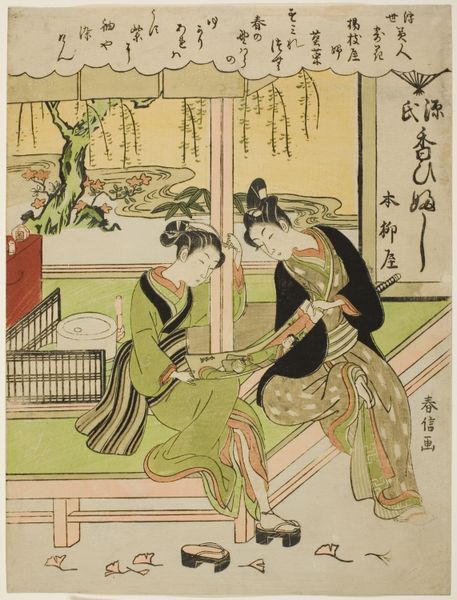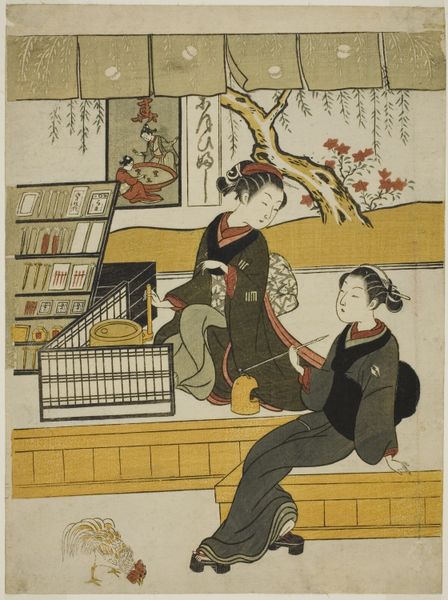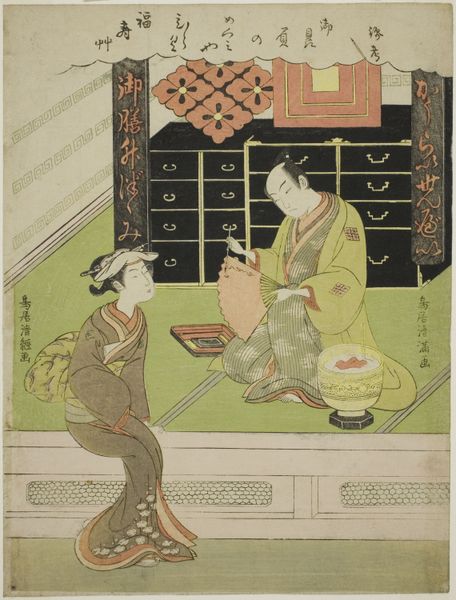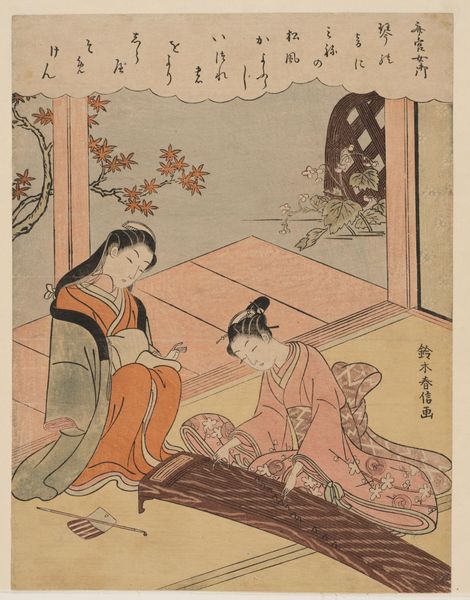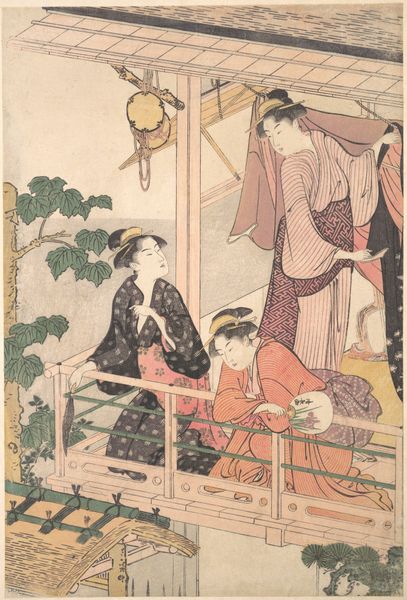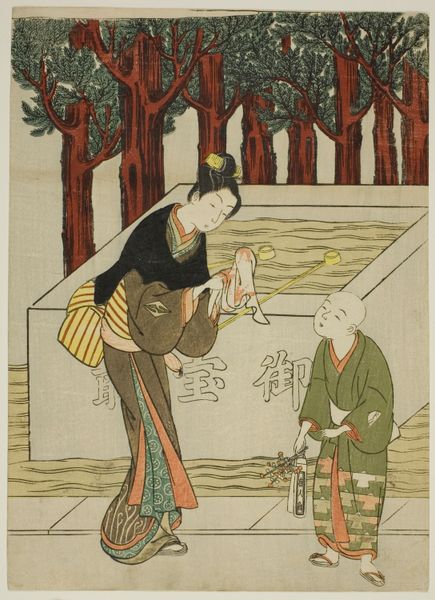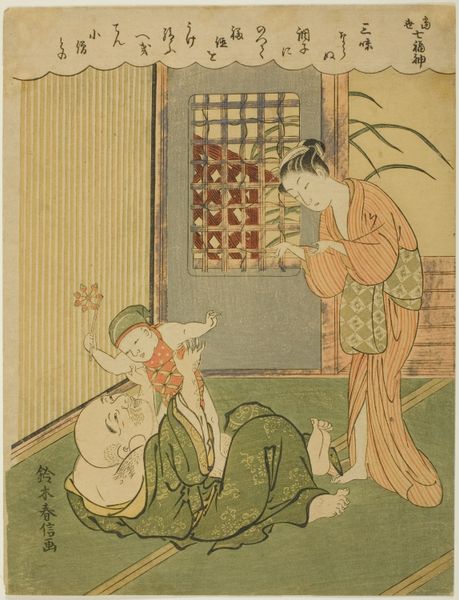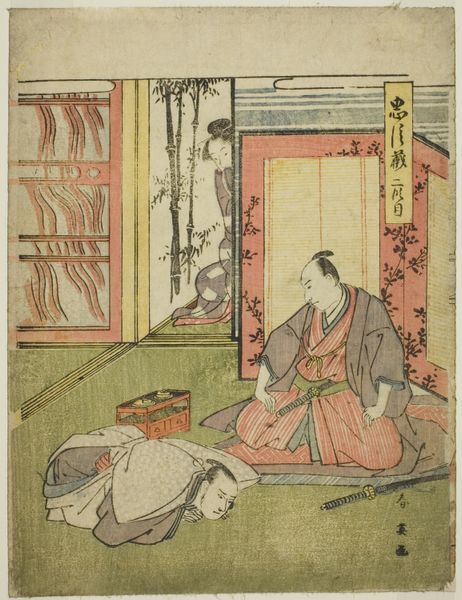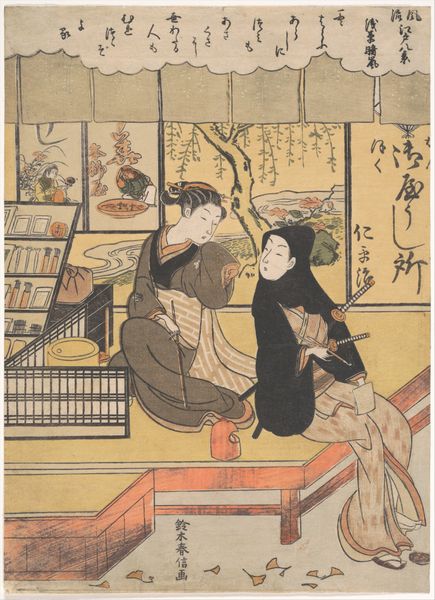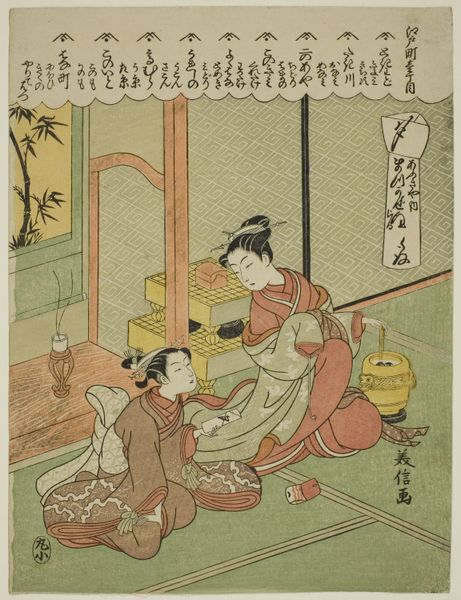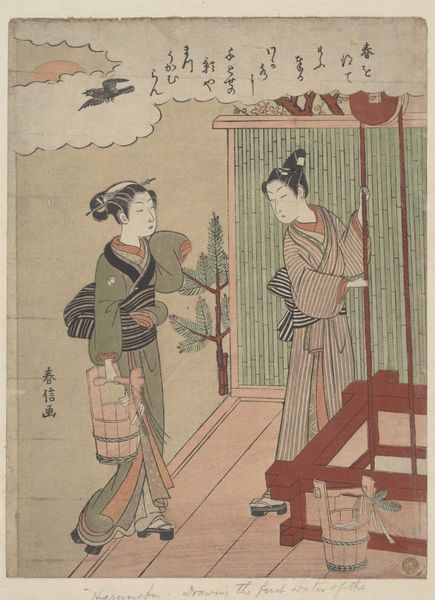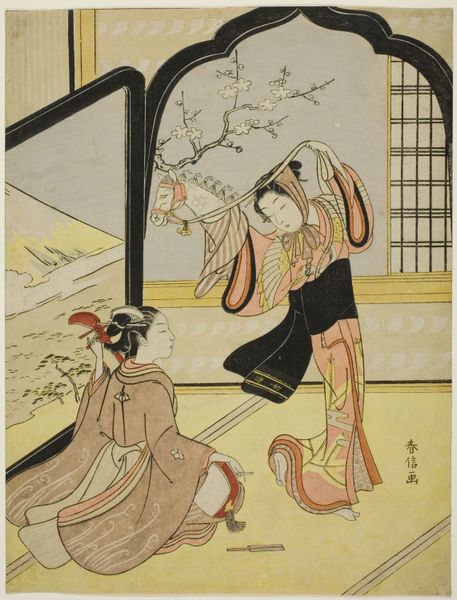
Clearing Weather at Asakusa (Asakusa no seiran), from the series "Eight Fashionable Views of Edo (Furyu Edo hakkei)" c. 1768 - 1769
0:00
0:00
print, woodblock-print
#
portrait
# print
#
asian-art
#
ukiyo-e
#
woodblock-print
#
genre-painting
Dimensions: 11 1/8 × 8 1/4 in.
Copyright: Public Domain
Editor: Here we have Suzuki Harunobu's woodblock print, "Clearing Weather at Asakusa," from around 1768 or 1769. I'm struck by the sense of quiet intimacy in the scene. Two women are relaxing indoors, seemingly unbothered by the outside world. What aspects of the piece stand out to you? Curator: What jumps out is the societal positioning of these women. While seemingly relaxing, we see clues—the swords for example—that suggest these women may be playing roles, perhaps of samurai. How might this subvert expectations around women's identities and agency in Edo-period Japan? Editor: I hadn't considered that! The swords are definitely an intriguing element that complicates the scene. So you are saying there is something intentionally transgressive about it? Curator: Precisely. The series title itself, "Eight Fashionable Views of Edo", hints at a focus on contemporary trends and the construction of identity. Harunobu uses the ukiyo-e genre, traditionally associated with depicting the floating world of pleasure and entertainment, to explore broader questions around female representation and societal roles. The "clearing weather" in the title, might signify an awakening to, or even a breaking free from, traditional restraints. Does that connect with how you perceived its "quiet intimacy" initially? Editor: Yes, that makes the quietness even more powerful. It's not just relaxation, but a sort of defiance, even. Are there other details that support this interpretation? Curator: Notice how they're situated within an interior space, but still connected to the outside through the window. They are within and without; unbound. How does this interplay between interiority and exteriority resonate with contemporary dialogues about female empowerment? Editor: It's amazing how much history and social commentary can be packed into one seemingly simple image! I will never look at Ukiyo-e prints the same way again. Curator: Indeed, it encourages us to see beyond the surface and to consider the complex intersections of art, society, and identity. It's an early example of a narrative on gender.
Comments
No comments
Be the first to comment and join the conversation on the ultimate creative platform.
